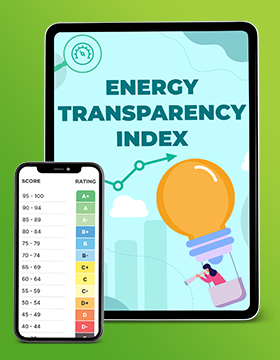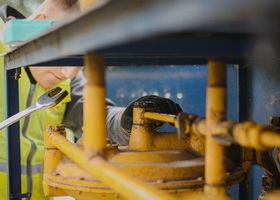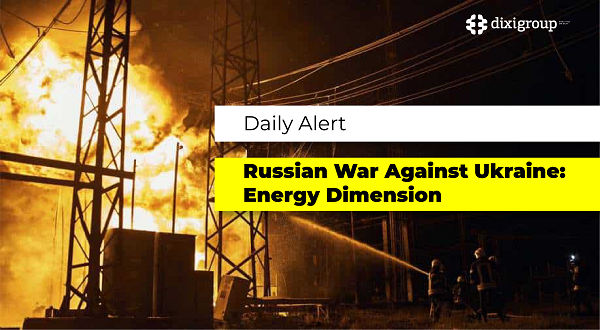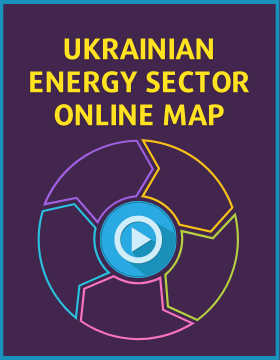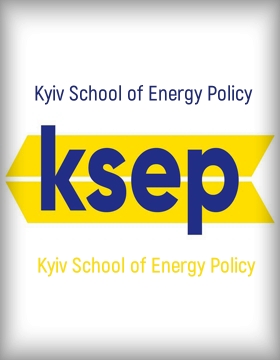Gas market in Ukraine: May growth, imports and resource shortage
Gas prices in Ukraine have risen to a two-year high

As of the end of May 2025, Natural Gas ExPro quotes recorded a record increase in the cost of natural gas on the domestic market of Ukraine - up to UAH 23,000 per thousand cubic meters (including VAT).
This is evidenced by the data of the ExPro resource quotes.
Ukrainian Energy found out what was the reason for such a jump.
The crisis is approaching
According to ExPro experts, such prices have become the highest in the last two years - the last time similar indicators were recorded was in February 2023. Then the prices for the resource fluctuated within the range of UAH 22,800–23,200/thousand cubic meters (including VAT), which is equivalent to UAH 19,000–19,333 excluding VAT, or $458–466/thousand cubic meters and €38.15–38.83/MWh.
It is important to note that these quotes do not take into account gas supplies under the terms of the PSO — that is, for the population, district heating or power generation, which are provided with gas at fixed prices in accordance with government resolutions.
The price increase began in early May, when, after stabilizing at the end of April, demand for gas began to significantly outweigh supply. In just a few weeks, the price increased by almost 20% — from UAH 19,100-19,400 to UAH 22,800-23,200 per thousand cubic meters.
The main factors in this jump were the disappearance of Ukrnafta’s resources from the open market. The government resolution obliged the company to sell its gas exclusively to Naftogaz at a fixed price — UAH 12,000/thousand cubic meters (including VAT). This significantly reduced the volume of free resources. The situation is similar with Ukrnaftoburynia. Demand from consumers also increased. Expecting further price increases and a possible shortage, many consumers began to buy gas in advance, forming additional reserves. The price increase is also affected by purchases by large companies. Players such as Naftogaz Trading and GTS Operator of Ukraine enter the exchange with large orders, which puts pressure on prices.
Another telling fact: on May 26, gas in Ukraine (May resource) was more expensive than spot quotes on the TTF (EU) hub by €2/MWh, and the June resource by €1.2/MWh or UAH 700/thousand cubic meters. The spread between Ukrainian and European prices reached its maximum since February 2024.
However, as ExPro notes, this difference does not yet cover all import costs, so a large-scale return of private imports has not yet occurred. But the first companies have already started importing gas - which may become a prerequisite for the recovery of this segment in the conditions of winter shortages.
Winter stocks
Meanwhile, Ukraine is already preparing for the next heating season. From April 17 to May 24, 2025, more than 1.06 billion cubic meters of gas have already been pumped into Ukraine's underground storage facilities - more than during the same period last year. However, the total volume in the underground storage facilities as of May 24 was only 6.46 billion cubic meters - the lowest level in the last 11 years.
To achieve last year's goal - 12.92 billion cubic meters by November 1 - Ukraine needs to pump more than 6.4 billion cubic meters, of which approximately 2.8-3.8 billion will have to be imported.
Overall, gas imports to Ukraine in May increased to more than 20 million cubic meters per day. The main volumes come from: Hungary - about 9.1 million cubic meters/day (the cheapest route); Poland - 5.9 million cubic meters/day; Slovakia, which returned as an import route on May 15 — from 0.4 to 5.2 million cubic meters per day.
In addition, Ukraine is considering the possibility of activating the “Vertical Corridor” — a route through the Balkans and Greece, which is currently not used due to high cost, but has potential after a 25% tariff reduction within the ROUT1 product.
The “Vertical Corridor” is an initiative of the GTS operators of European countries, which should increase the volume of gas transportation from the South to the North.
This year's gas injection season into storage facilities began later than last year, which is due to cold weather in the first half of April and damaged domestic gas production due to massive Russian attacks in February-March. Already in May, Ukraine continues to actively restore the affected gas production facilities, but has not yet managed to return to the January production level (54 million cubic meters per day).
However, it is worth noting that it is currently unknown what the target is for November 1st – this information is being withheld as sensitive during the war.
The political aspect and Russian gas
In the face of serious damage to the gas production infrastructure as a result of massive Russian attacks, a significant reduction in reserves in underground storage facilities and the actual downtime of part of the production capacities, Ukraine is forced to increase the volume of purchases of Russian gas arriving in transit through European countries.
The first deputy chairman of the parliamentary Committee on Energy and Housing and Utilities, Oleksiy Kucherenko, confirmed:
“I have to disappoint you, but we are definitely buying Russian gas that comes through the Turkish Stream, goes to Serbia and Hungary,” he said.
According to the MP, due to the shortage of gas in the country, the heating season had to be ended earlier than usual.
According to data from Naftogaz, Ukrgazvydobuvannya lost about 50% of its production due to shelling, which further increased its dependence on gas supplies via Europe, including that of Russian origin.
According to Bloomberg estimates, in 2025 Ukraine may import a record 5 billion cubic meters of gas from Europe.
At the same time, according to Oleksiy Zayets, acting CEO of Smart Energy, blocking the work of extractive enterprises in Poltava and Kharkiv regions will lead to a shortage of 78 million cubic meters of gas by the end of 2025. Under such conditions, Naftogaz will have to import this volume at a significantly higher price.
Scandals surrounding the tariff for the population
People's Deputy Nina Yuzhanina drew attention to the unfoundedness of tariffs for the population on Telegram.
She indicated that Ukrgazvydobuvannya sells the resource to Naftogaz at 7,240 UAH/thousand cubic meters, while the tariff for household consumers is 7,960 UAH.
“The full cost of its own production is 1,023 UAH per thousand cubic meters, excluding depreciation and rent,” Yuzhanina wrote. She also emphasized the overestimation of the investment component.
At the same time, as stated in the report of the temporary investigative commission of the Verkhovna Rada, the cost of depreciation increased to 2,035 UAH per thousand cubic meters. Thus, this component significantly exceeds the total value of the remaining elements that make up the cost of domestically produced gas. Which may indicate an attempt by the management of NJSC Naftogaz of Ukraine to overstate operating expenses, Yuzhanina noted.
Ukrgazvydobuvannya also significantly overestimated the amount allocated for investments in gas production. According to its reports, it is 3,433 UAH per thousand cubic meters. However, in reality, the real contribution to investments turned out to be much lower - 956 UAH per thousand cubic meters.
“In fact, we see that Naftogaz, which has long been in need of reorganization, is simply redistributing funds earned by its subsidiaries. This is not a black hole, but a completely profitable business,” said energy expert Oleg Popenko.
The Ukrainian gas market in May 2025 is under pressure from several powerful factors at once: a decrease in domestic production, a rapid increase in demand, a limitation of the free resource on the market, as well as a gradual return to imports - in particular, of Russian origin. Market mechanisms worked predictably - the price rose to historical highs.
Despite a certain increase in reserves in underground storage facilities, Ukraine enters the summer period with the smallest volumes of gas in the last 11 years. This creates serious risks before the start of the next heating season, especially in conditions of damaged infrastructure and geopolitical instability.
Against this background, the need for a deep market reform is becoming increasingly urgent: transparency in tariff formation, effective production and import policies, as well as the fight against monopolization and opaque costs - all this will determine whether the state will be able to ensure energy sustainability in the coming months.
Olena Marchenko, specially for "Ukrainian Energy"

